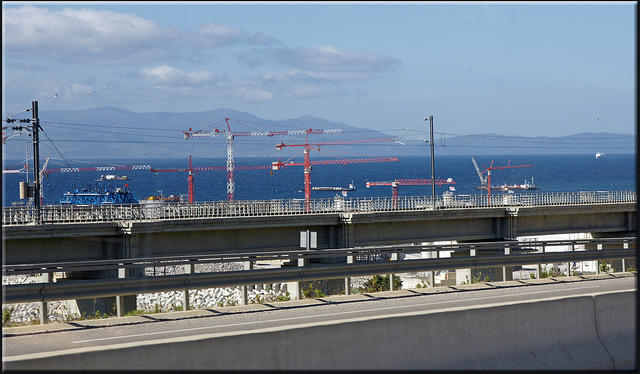Updated
Business Brief: MCC Releases Final Results of First Compact with Morocco; Economy Plows Ahead on Expanding Exports and Push for Tourism – Jean R. AbiNader
Jean R. AbiNader, MATIC
December 20, 2016

Jean R. AbiNader, Exec. Dir., Moroccan American Trade and Investment Center
Despite lower growth in 2016 due to last year’s drought and depressed phosphate prices, Morocco continues to invest both to boost the national economy and to increase commercial ties in Africa and elsewhere. The MCC released its final report on its initial compact with Morocco, which completed in 2013, and provided more details on a portion of the second compact now being rolled out. Morocco’s culture was featured in several articles promoting the food and natural beauty of the country.
MCC reports. In the first of two recent articles, MCC highlighted the financial services project from the first compact with Morocco. “The $42.8 million Financial Services Project (FSP) …aimed to increase financial services to microenterprises in Morocco, by addressing the major constraints to the development of a deeper, broader and more market-oriented financial sector.” The project focused on increasing access to loans funds by providing funding to Jaïda, the microfinance authority, to support growth in lending to existing and new clients; increasing the capital and professionalism of microfinance associations (AMCs); the creation of new financial products and the capabilities of the AMCs; and instituting regulations and training to improve the operating efficiency and transparency of the loan-originating institutions.
Overall, the project has made a positive medium-term impact on the sector, and longer term projections are all positive. Given that the FSP had to weather the downturn in the global economy, which directly affected the microfinance sector, the results were in line with projections, and the report stressed the value of involving the AMCs in the project preparation and design.
In the second article, MCC gave more details on the industrial land use improvement project that is one of the two key components of the second MCC compact. The objective is to develop strategies for improving access to industrial estates for SMEs to support their growth opportunities. As the release states, the “$127 million industrial land investment will support a sustainable approach to industrial land development, using public-private partnerships to develop, manage and maintain industrial zones that meet the needs of businesses and attract private investment.”
Developing more robust and better-managed industrial estates will benefit both Moroccan and international investors. It will enable SMEs to have access to land with quality infrastructure and business services, such as licensing, training, incubators, waste and power services, suppliers serving multiple companies, as well as partner research and development facilities. According to the release, there are currently more than 100 industrial zones in Morocco, many poorly designed and maintained. Without improving their management and logistical services, they are not acting as magnets for investors.
MCC intends to develop land management regimes that will enhance existing industrial zones and develop approaches that are “economically, socially and environmentally sustainable.” The second compact also plans to work with the government to improve secondary education and vocational training to upgrade Morocco’s workforce, essential to the overall appeal to domestic and international investors.

Morocco’s Tangier-Med Port. Photo: mhobl on Flickr
Investing in Morocco, a safe bet. According to Frontera, Morocco has growth opportunities that are at the top of frontier market economies. Its stability and strong government support for growth, well designed economic plans and incentives, and ability to reach markets across the region, all contribute to a positive profile for investors. As the article noted, “Morocco is known as a first-rate tourist destination in Northern Africa, and is often cited as a potential hub country linking Europe with Africa and the Middle East.”
In its detailed analysis, prepared by Investment Frontier, the article covered investment opportunities by sector; the economy and its components; leading firms; and an assessment of the stock market and its listings. It notes that because of its young population and high rate of internet penetration, “mobile technology and internet usage in Morocco is among the highest in Africa, and there is a lot of potential for the country to be a leader in Africa and the Middle East in this space going forward.”
Love that food, and what views!! The Independent recently featured two articles that made the cold weather seem far away. The first looked at four tourist destinations that are touted as eco-friendly, presenting four distinct views of the country. The original eco-lodge dating back to 1995, is Kasbah du Toubkal, near Imlil in the Atlas Mountains; the Beldi Country Club, near Marrakech, blends unique design and natural beauty; the Atlas Kasbah near Agadir draws 80% of its energy from solar power; and the Kasbah bab Ourika, in the Ourika Valley is constructed primarily from pisé (rammed earth) using traditional Berber building techniques. The pictures alone are worth clicking on the link.
More comforting, and less expensive, is the article on Moroccan food. Rather than an all-inclusive list, the author chose five specialties that are identified with Moroccan cuisine. The article points out that “From the heady aromas of cinnamon, allspice and ginger emanating from a freshly baked pigeon b’stilla, to sardines dusted with cumin and coriander, and the richness of smoky, zesty chicken tagine, every mealtime in Morocco is an opportunity to delve a little deeper into the country’s rich cultural heritage, savouring culinary influences from Andalusian Spain, Arabia and France.”
The foods include: b’stilla, the incredible flaky pastry pie, originally from Fez, that can be stuffed with a variety of fillings; zaalook, a smoky eggplant pureed dip and b’sara, a dip made from broad beans; harira, a traditional soup for feasts using lamb broth as a base; tagines, the national dish of Morocco that combines steamed couscous with all variety of vegetables and/or meats; and of course desserts.